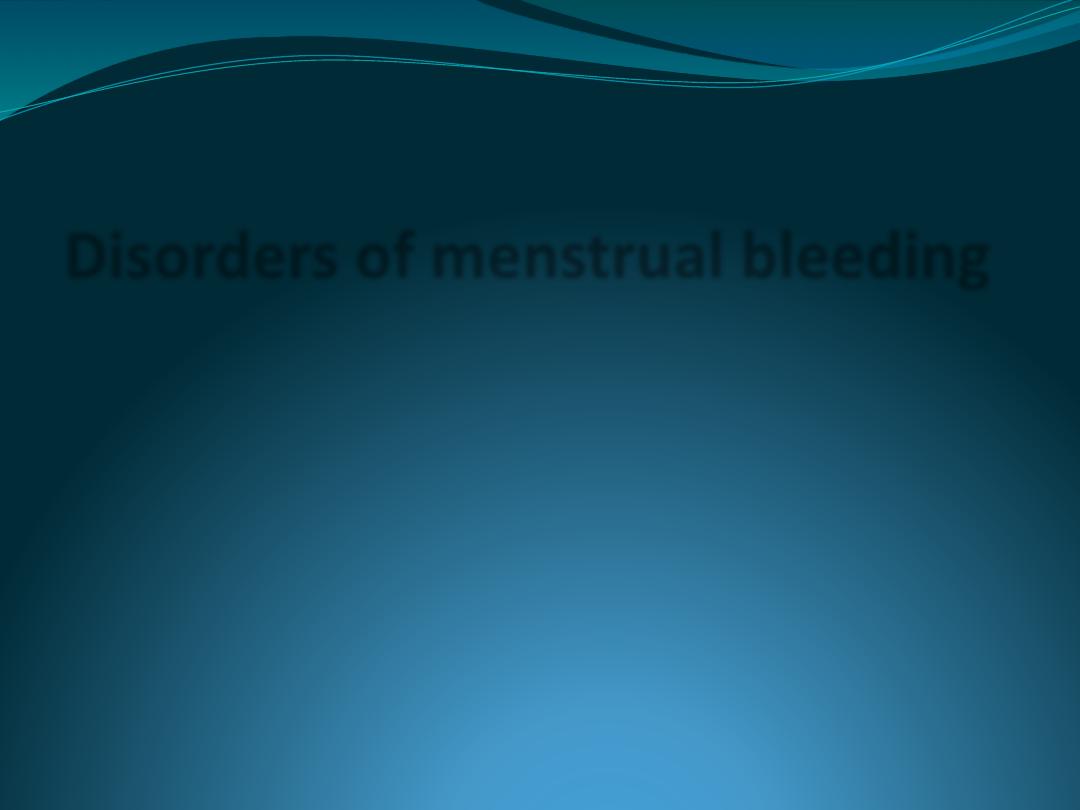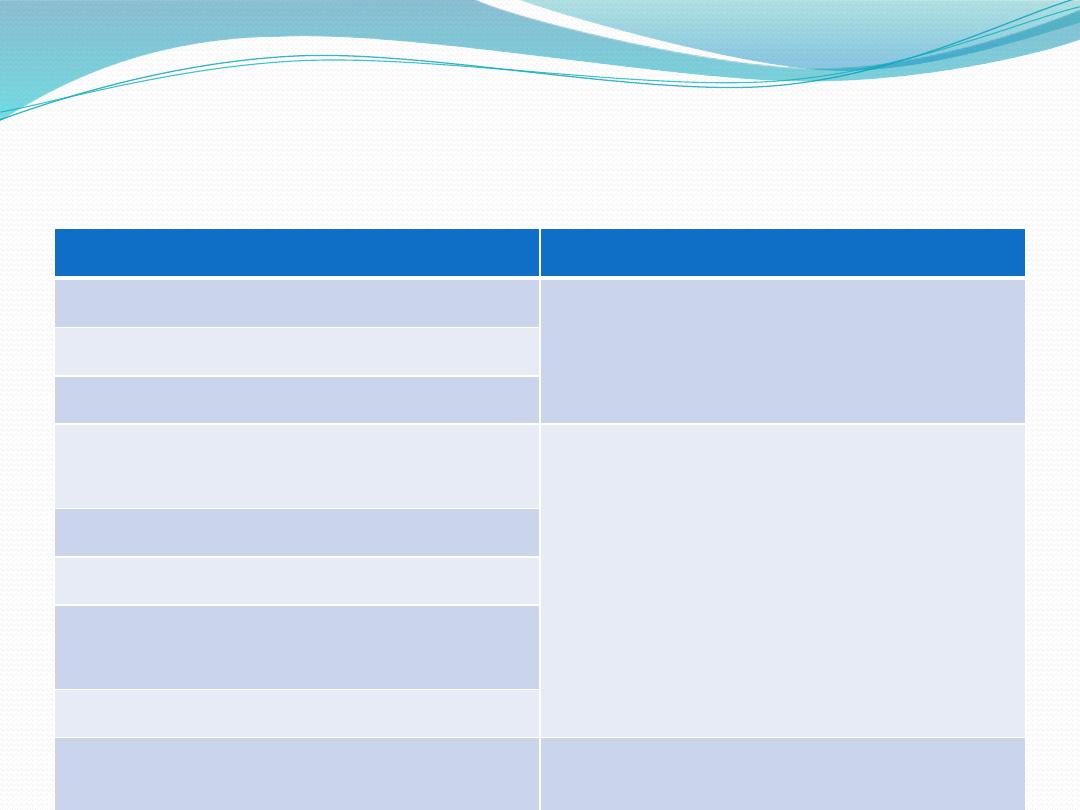
Disorders of menstrual bleeding

LEARNING OBJECTIVES
●
Understand the symptoms and etiology of abnormal
uterine bleeding (AUB).
●
• Describe the terminology of AUB.
●
• Understand the symptoms, investigation and
management of heavy menstrual bleeding (HMB).

Accepted terminology for common types of
AUB
●
• HMB: excessive menstrual blood loss
●
• IMB: bleeding between periods, often seen with
endometrial and cervical polyps also endometriosis
●
• PCB: bleeding after sex. Often associated with cervical
abnormalities ( Premalignant and malignant disease of the
lower genital tract).
●
• PMB: bleeding more than 1 year after cessation of
periods. Exclude endometrial pathology or vaginal
atrophy
●
• BEO: ‘bleeding of endometrial origin’, a diagnosis of
exclusion, has replaced the term
●
‘dysfunctional uterine bleeding’ (DUB).

Heavy menstrual bleeding
●
HMB is defined as ‘excessive menstrual blood loss
which interferes with the woman’s physical, emotional,
social and material quality of life, and which can occur
alone or in combination with other symptoms’.
●
HMB is defined as a blood loss of greater than 80 ml
per period.
●
Of women of reproductive age
, 20–30%
suffer from
HMB

Aetiology
FIGO classification system for causes of abnormal uterine bleeding in non-
pregnant women
PALM-COEIN system
●
Structural causes Non-structural causes
PALM
COEIN
●
Polyp
Coagulopathy
●
Adenomyosis
Ovulatory dysfunction
●
Leiomyomata – submucosal
Endometrial
●
Leiomyomata – other
Iatrogenic
●
Malignancy or hyperplasia Not yet classified

●
Fibroids: 30% of HMB is associated with fibroids.
●
• Adenomyosis: 70% of women will have AUB/HMB.
●
BEO
●
is the diagnosis of exclusion. This replaces the older
DUB.
●
Disordered endometrial prostaglandin production has
been implicated in the etiology of BEO,
●
as has abnormalities of endometrial vascular
development

History and examination
Associated symptom
Suggestive of
Irregular bleeding
Endometrial or cervical polyp or other
cervical abnormality.
IMP
PCB
Excessive bruising /bleeding from
other sites
Coagulation disorder in 20% of those
with unexplained HMB
History of PPH
Excessive postoperative bleeding
Excessive bleeding with dental
extractions
Family history of bleeding problems
Urinary symtoms, abdominal mass or
abdominal fulness
Pressure from fibroids

Examination
●
After examining the patient for signs
of anaemia,
●
it is important to perform an
●
abdominal and pelvic examination
in all women
complaining of HMB. This enables any pelvic masses
to be palpated, the
●
cervix to be visualized for polyps/carcinoma
,
●
swabs
to be taken if pelvic infection is suspected or a
●
cervical smear
to be taken if one is due.

Investigations
●
The NICE guidelines for HMB indicate the following
investigations and are useful guide for clinicians:
●
•
Full blood count (FBC)
should be performed in all
women (but
serum ferritin
should not be performed).
●
•
Coagulation screen
only if coagulation HMB since
menarche or family history of coagulation defects.
●
•
Hormone testing
should not be performed.
●
•
Pelvic ultrasound scan
if history suggests structural
or histological abnormality such as PCB, IMB,

investigations
●
pain/pressure symptoms, or enlarged uterus or vaginal
mass is palpable on pelvic examination.
●
• High vaginal and endocervical swabs.
●
• EB should be considered if risk factors such as age
over 45, treatment failure or risk factors for
●
endometrial pathology. Sensitivity of EB increases when
performed in addition to using the cut-off of 4
●
mm endometrial thickness on TVUSS.
●
• Thyroid function tests should only be carried out
when the history is suggestive of a thyroid disorder.

An outpatient hysteroscopy with guided
biopsy may be indicated if:
●
EB biopsy attempt fails.
●
• EB biopsy sample is insufficient for histopathology
assessment.
●
• TVUSS is inconclusive, for example to establish the
exact location of a submucosal or intramural
●
fibroid.
●
• There is an abnormality on TVUSS amenable to
treatment (e.g. suggested endometrial polyp or
●
submucosal fibroid), if there are facilities to perform
resections.

Role of EB in HMB
●
An EB or outpatient hysteroscopy is indicated if there
is:
●
• PMB and endometrial thickness on TVUSS >4 mm.
●
• HMB over 45 years.
●
• HMB associated with IMB.
●
• Treatment failure.
●
• Prior to ablative techniques.
